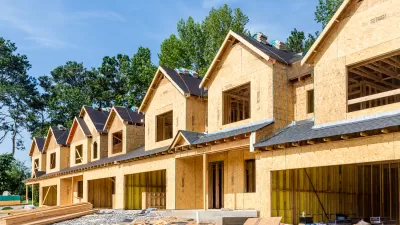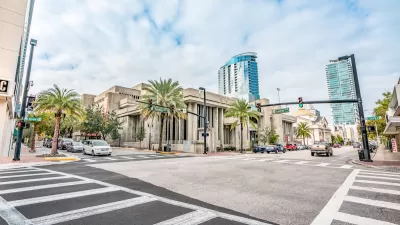The rise of the innovation economy is driving fierce competition between cities across America to attract medical facilities and universities as job providers and engines of development.
The role of the medical industry and higher education in stimulating development, and boosting employment, is the focus of reporting by Urban Land Magazine's Mike Sheridan. As America moves from a manufacturing economy to a knowledge economy, medical facilities and universities are leading the diversification of metropolitan economies across the country.
"Among the 100 largest cities in the country, two-thirds have medical facilities and universities as major employers, [Tom Murphy, ULI senior resident fellow, and former mayor of Pittsburgh] notes. 'Over the last 20 years, we've watched a real turnaround in cities that historically were manufacturing based, and over the years it's all changed,' he says. 'Medicine and education have become economic generators in cities including Baltimore, Boston, and a number of others. It speaks [volumes] about the loss of manufacturing jobs and also about the increasing impact of medical facilities, which are not only providing care and education, but also becoming major research centers with a major economic impact.'"
In post-recession Florida, Orlando is looking to Lake Nona Medical City to provide jobs and economic development. With partners such as the University of Florida, Nemours pediatric health care system, and U.S. Department of Veterans Affairs, Lake Nona's Medical City campus is expected to provide thousands of new jobs and generate billions of dollars in construction spending.
Understanding the growing importance of such facilities, cities across America are offering lucrative incentives and building infrastructure to lure colleges and medical cluster anchors. "Communities-and developers-seeking to attract medical clusters should be patient and listen to others who have been through the process, says [Larry Pelton, president of the Economic Development Council of St. Lucie County]. 'They should build infrastructure that is attractive to scientists and to the institutes, including housing, education, and recreation facilities, a vibrant vendor/supplier network, and a leadership team that is 100 percent committed to success,' he advises."
Thanks to Andrew Gorden
FULL STORY: Innovation Anchors: Medical and Educational Facilities Drive Development

Pennsylvania Mall Conversion Bill Passes House
If passed, the bill would promote the adaptive reuse of defunct commercial buildings.

Planning for Accessibility: Proximity is More Important than Mobility
Accessibility-based planning minimizes the distance that people must travel to reach desired services and activities. Measured this way, increased density can provide more total benefits than increased speeds.

Fair Housing Cannot Take a Back Seat to ‘Build, Baby, Build’
If we overlook fair housing principles in the plan to build US housing back better, we risk ending up right back where we started.

LA Metro Board Approves New 710 Freeway Plan
The newest plan for the 710 corridor claims it will not displace any residents.

Austin’s Proposed EV Charging Rules Regulate Station Locations, Size
City planners say the new rules would ensure an efficient distribution of charging infrastructure across the city and prevent an overconcentration in residential areas.

Making California State Parks More Climate-Resilient
A recently released report offers recommendations for keeping state parks healthy and robust, including acquiring additional land for conservation and recreation.
City of Costa Mesa
Licking County
Barrett Planning Group LLC
HUD's Office of Policy Development and Research
Mpact Transit + Community
HUD's Office of Policy Development and Research
Tufts University, Department of Urban and Environmental Policy & Planning
City of Universal City TX
ULI Northwest Arkansas
Urban Design for Planners 1: Software Tools
This six-course series explores essential urban design concepts using open source software and equips planners with the tools they need to participate fully in the urban design process.
Planning for Universal Design
Learn the tools for implementing Universal Design in planning regulations.

























